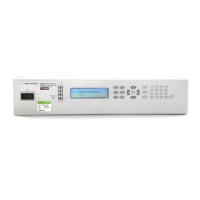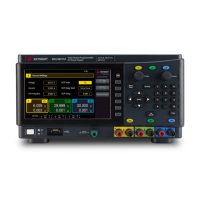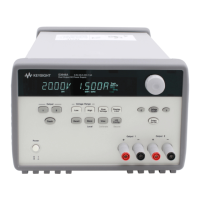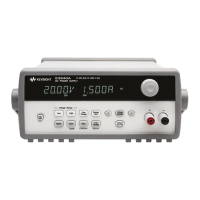Sequencing the Output
This section describes how you can synchronize output turn-on and turn-off sequences on single and
multiple units.
Turn-On/Turn-Off Behavior
Turn-On/Turn-Off Delays
Enabling/Disabling the Output
Sequencing Multiple Units
Turn-On Turn-Off Behavior
The following figure illustrates the output turn-on and output turn-off sequence followed by a
description of the individual components.
Sequence Description
1. Upon the receipt of an Output On command, the power supply waits for the duration of the user-
programmed turn-on delay (which is zero by default).
2. In Voltage Priority mode the power supply programs the output to the minimum voltage setting
during the internal delay time, which is 12 milliseconds for models without relay options and 38 mil-
liseconds for models with relay options due to output relay closure. In Current Priority mode the
power supply ensures that there is zero output current flow during the internal delay time, which is
14 milliseconds without relay closure and 46 milliseconds with relay closure.
3. The output is programmed to the output setting while following the slew rate and compliance
limit.
4. The output reaches the programmed setting.
5. Upon the receipt of an Output Off command, the power supply waits for the duration of the user-
programmed turn-off delay (which is zero by default).
6. In Voltage Priority mode the power supply down-programs the output to the minimum voltage set-
ting. In Current Priority mode the power supply down-programs the output current to zero. In both
cases the slew rate setting (if programmed ) is followed. If a slow slew rate has not been pro-
grammed, the power supply may wait up to 250 milliseconds (but only as long as necessary) for
the output to down-program before proceeding to the next step.
Keysight N6900/N7900 Series Operating and Service Guide 127
4 Using the Advanced Power System

